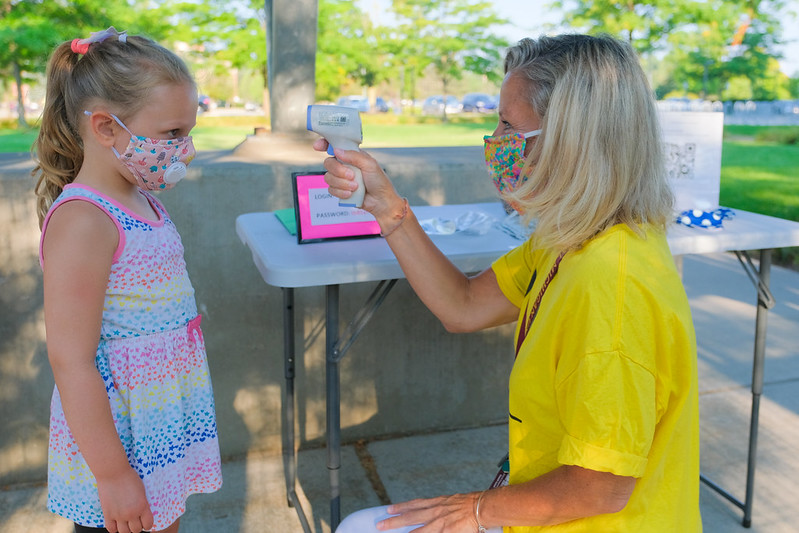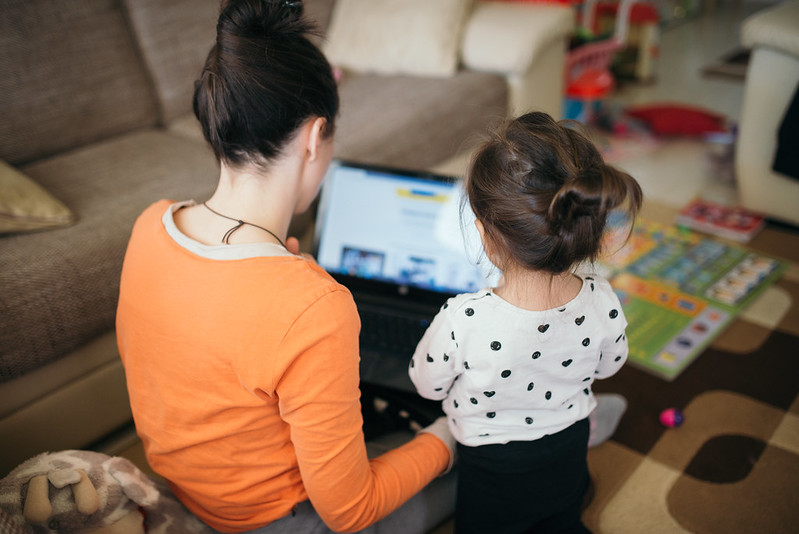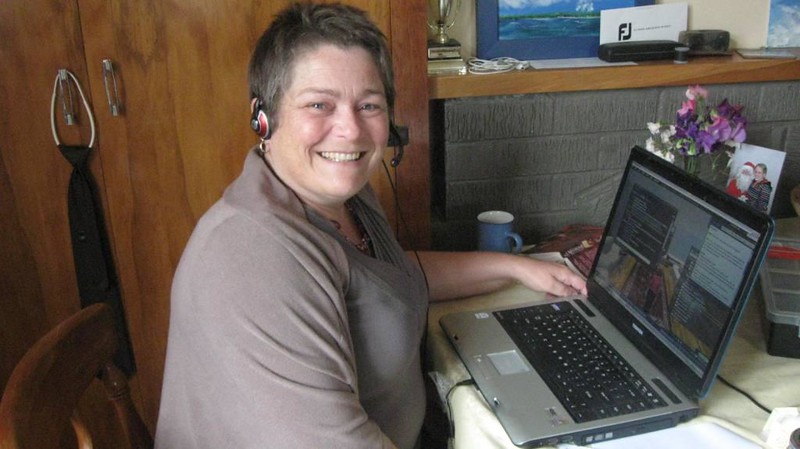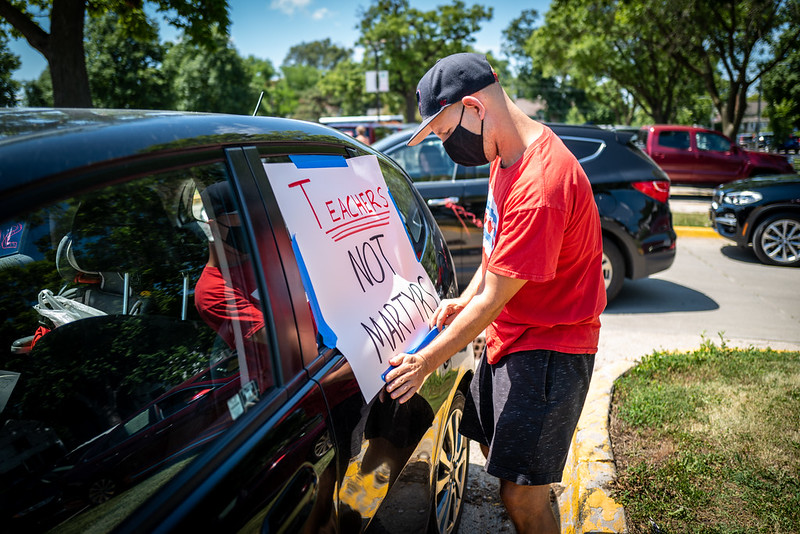Editor’s Note: School is back in session (can you hear the sigh of relief from parents?), and we know how incredibly important it is to have students in the classroom in a safe manner. There are questions about mask wearing, social distancing, who’s vaccinated and who is not, and guess who gets to handle all of these issues? That’s right, the teachers. Certain teachers are so valuable; yet, we are a country that doesn’t value our teachers, just as writer Jessie Gonon points out with this comparison of teachers to babysitters and pod facilitators before offering a solution for the coming years.

Student temperature check. Photo by: Dan Gaken
The transition to virtual learning we saw during the coronavirus pandemic changed the way that families prepare for school, especially those with elementary-aged children. Back-to-school shopping, which usually consists of pencils, notebooks and tissue boxes, now requires reliable internet access, a working computer for each school-age child, and extended childcare, sometimes in the form of newly established learning pods with private tutors.
No matter if the student is online or in person, they are greeted by their teacher, who has risen to and reluctantly accepted the new challenges, who may or may not have adapted to the technology, and who is still being paid increasingly lower wages despite their extra efforts (when adjusted for inflation, the current average teaching salary is 1.3% less than the 1999-2000 school year). To take a closer look at how poorly teachers are paid, let’s compare it with one of these “pod facilitators” that popped up and continue to pop up during the pandemic.

Mother and daughter on computer. Photo by: Nenad Stojkovic
The “pod facilitators” are paid exponentially more than practicing professional teachers; yet, they have no training, no curriculum standards that they are bound by, and the student groups are a significantly smaller group. In the 2018-2019 school year, the average teaching salary was $61,730. Assuming a school year is 180 days, and teachers work 6 hours a day, plus an hour of prep, that comes out to a little over $48 per hour. This doesn’t seem bad, but most teachers pay between $500 and $1,000 yearly out of pocket for school supplies and classroom materials, making their earnings less substantial. The current average for the hourly pay of a tutor is between $25 and $80 per hour, and due to high demand, many are paying private tutors on the higher end of this spectrum and beyond.
Why would parents choose to pay so much more? Well, because for as many wonderfully educated and proficiently effective teachers, there are also horrible ones. So, I offer a solution:

Teacher doing virtual learning. Photo by: Sarah Stewart
With newly established virtual learning platforms, such as Zoom, Canvas, and Google Classroom, the teacher shortages that plague the American public education system could be nonexistent. Instead of having several mediocre teachers teaching 30 students each, one high-quality teacher could be teaching 300 students via a virtual platform and could be compensated accordingly. In some schools across America, namely a lot of private schools, teachers do not even have to be certified to be hired, similar to the pod facilitators, highlighting stark differences between professional and non-professional teachers. In urban and rural areas, Teach For America teachers help to fill shortages, but contribute to the high turnover levels, which in turn creates teacher shortages, lowering the quality standards for hiring yet again. In areas where the teachers are certified, they oftentimes cannot pay off their student loans or buy property near their job. Some turn to second and even third jobs before being pushed out of the industry because they cannot financially support themselves. The use of technology to expand access to high-quality education may seem radical, but rather than being a glorified babysitter, this would elevate the status (and pay) of professional educators, and make the current necessity for non-professional teachers to fill shortages obsolete.

“Teachers, Not Martyrs” sign on car for an Iowa protest. Photo by: Phil Roeder
Implementing this may be difficult, but with the money saved from hiring less teachers as well as other saved expenses that are not a factor when the school building is not open, local or (God willing) federal aid could be used to provide all students with the technology that they need. Many districts have adopted new policies on access and equity, and this is the most mutually beneficial way to provide these important characteristics, for both the students and professional educators. In this new role as a glorified babysitter, the teacher’s life is drastically different. They receive higher pay, have the opportunity for one-on-one interactions, and the ability to have constant contact, support, and input from parents.
For further reading on virtual teaching and learning:
 New Orleans Startups
A brief overview of the growing New Orleans startup scene. This piece highlights the main industries of New Orleans, competing cities, and just how emerging the current entrepreneurial/startup scene is in New Orleans.
New Orleans Startups
A brief overview of the growing New Orleans startup scene. This piece highlights the main industries of New Orleans, competing cities, and just how emerging the current entrepreneurial/startup scene is in New Orleans.
 A Bin in Every Classroom: Why Tulane Should Lead on Composting
I asked a peer, Isabel, for her thoughts on composting: “Why do...
Tulane
A Bin in Every Classroom: Why Tulane Should Lead on Composting
I asked a peer, Isabel, for her thoughts on composting: “Why do...
Tulane